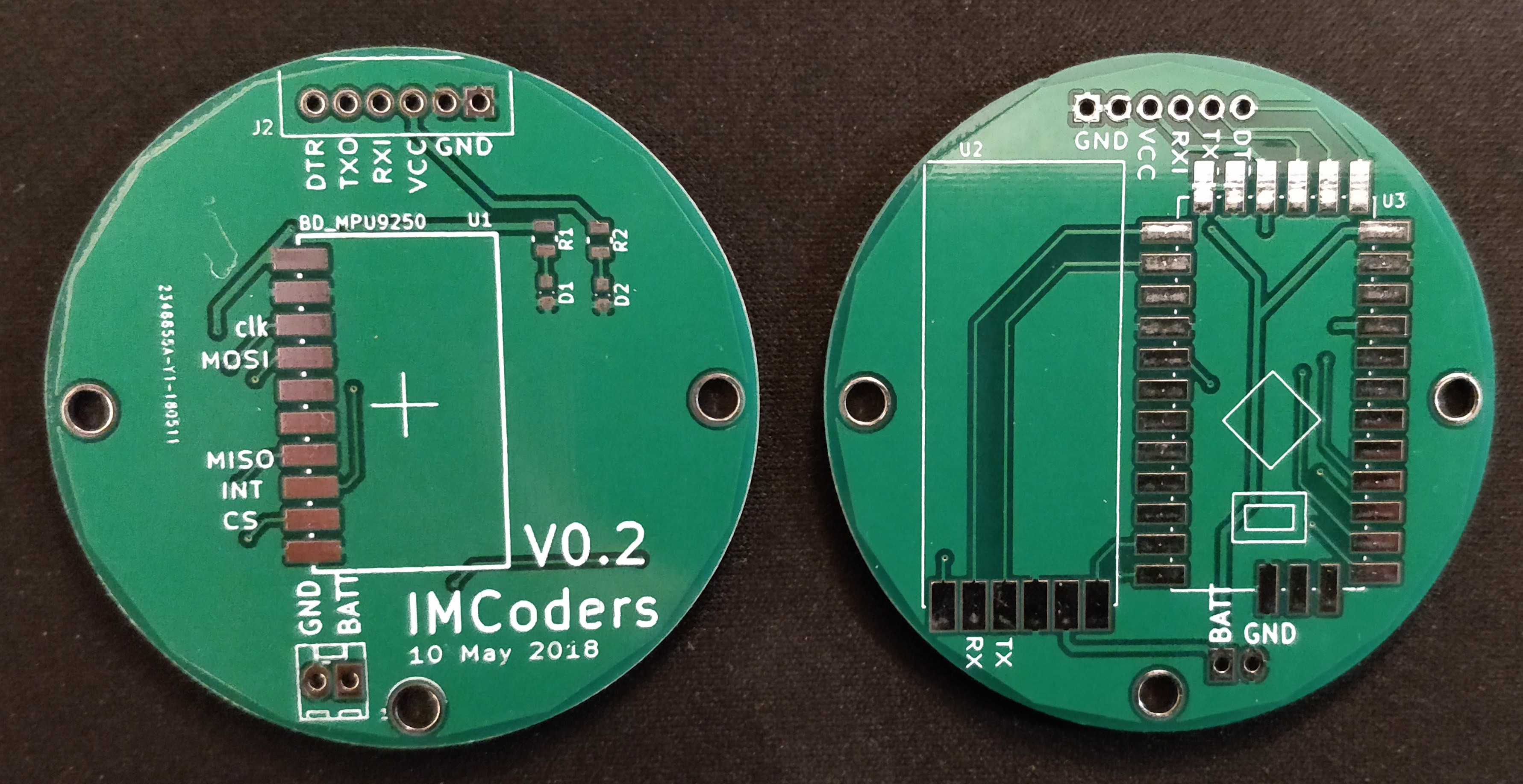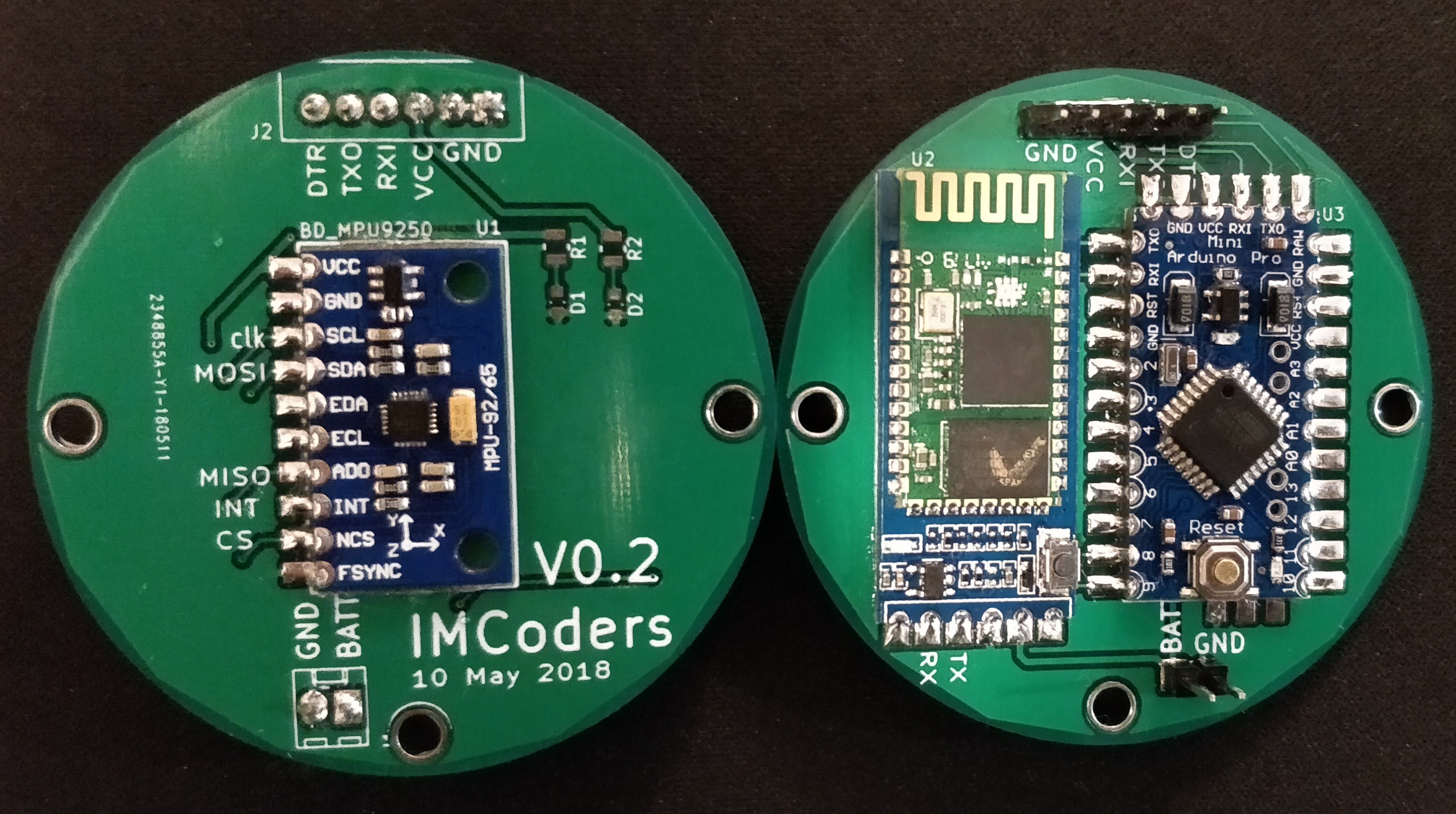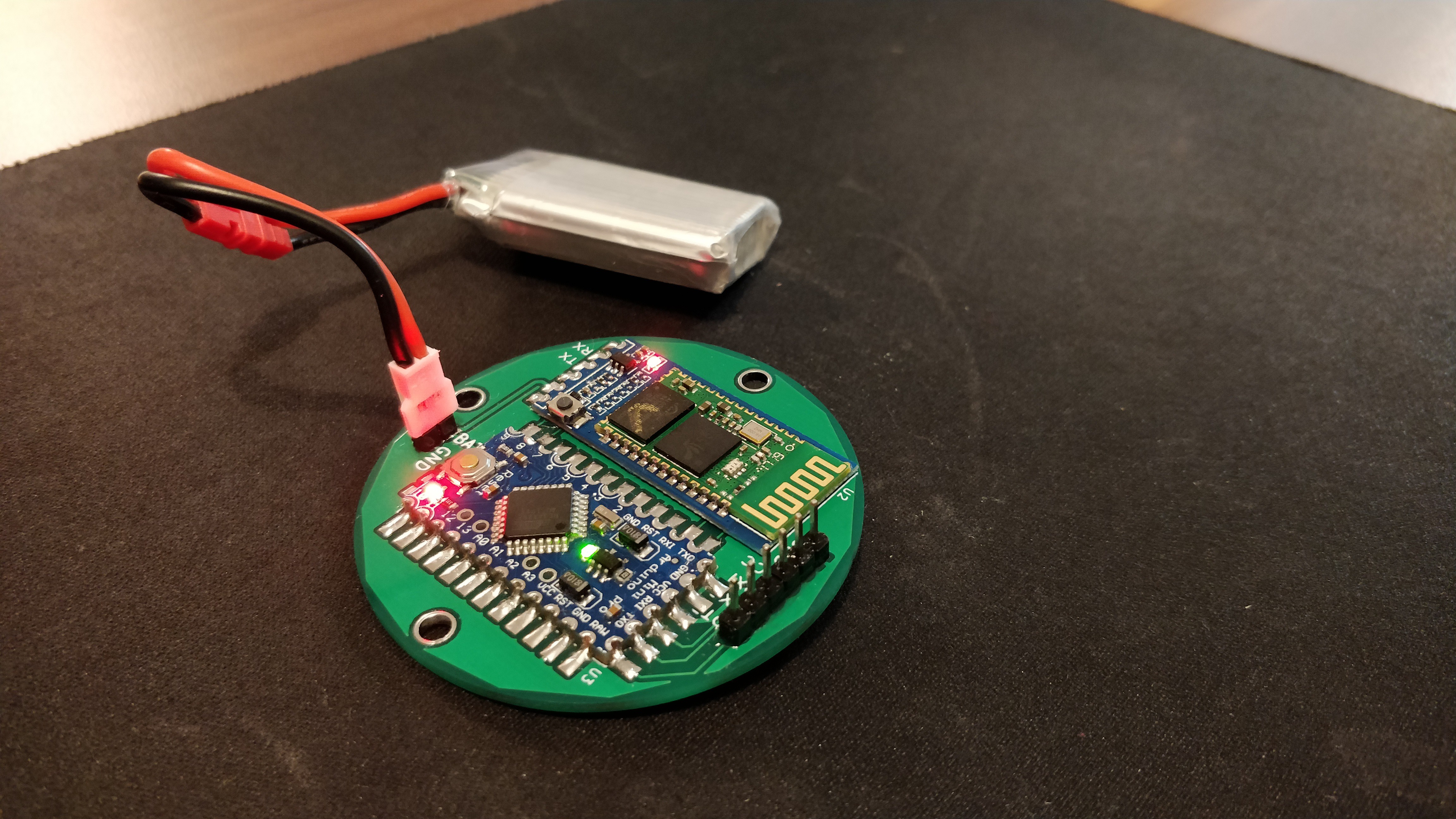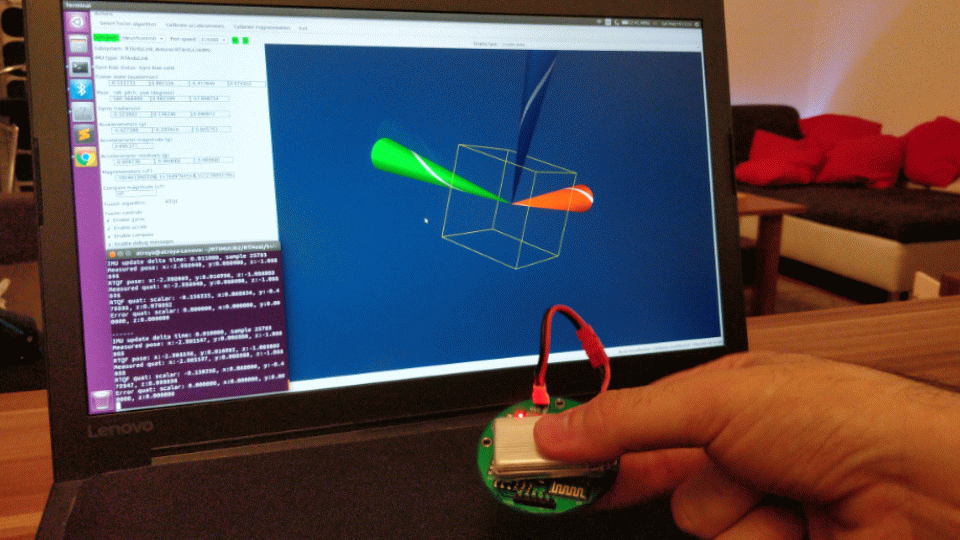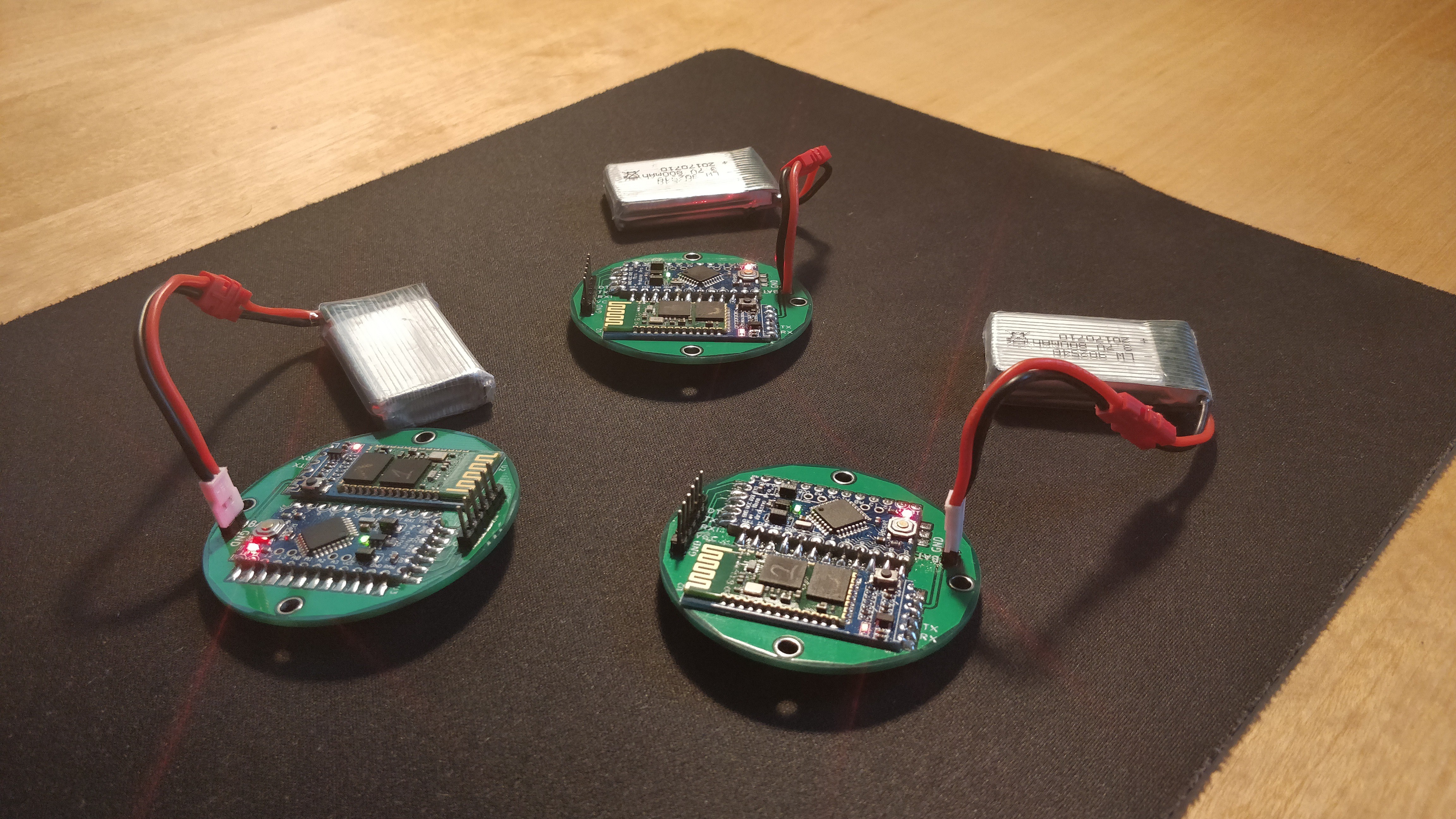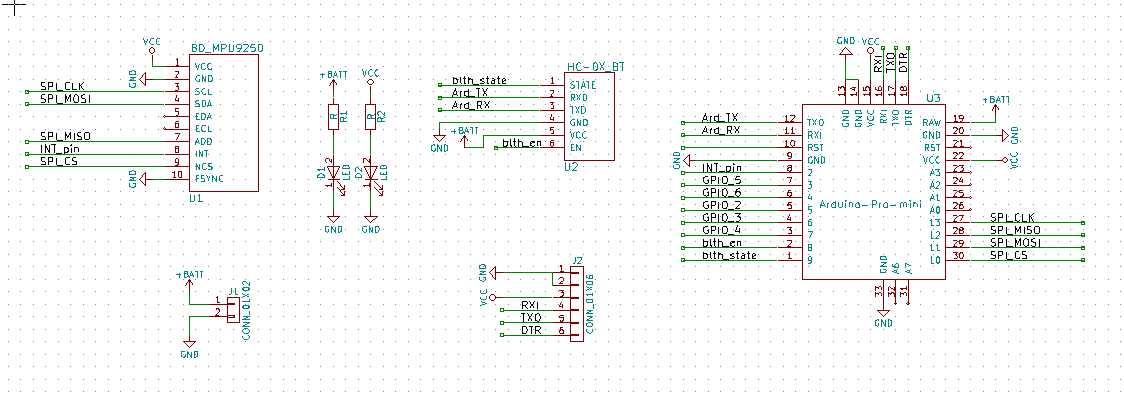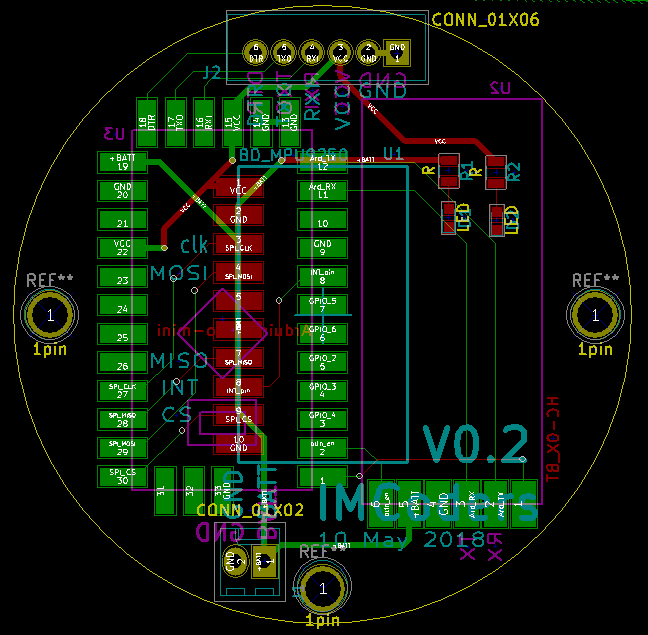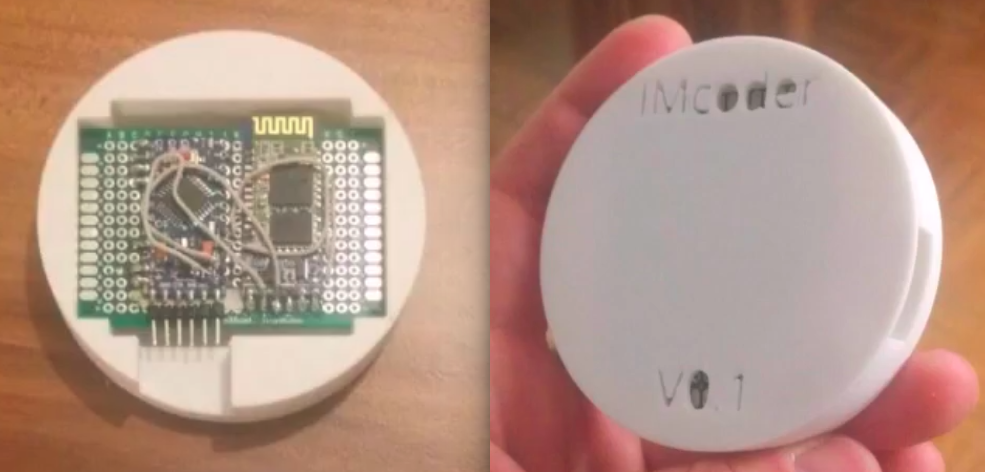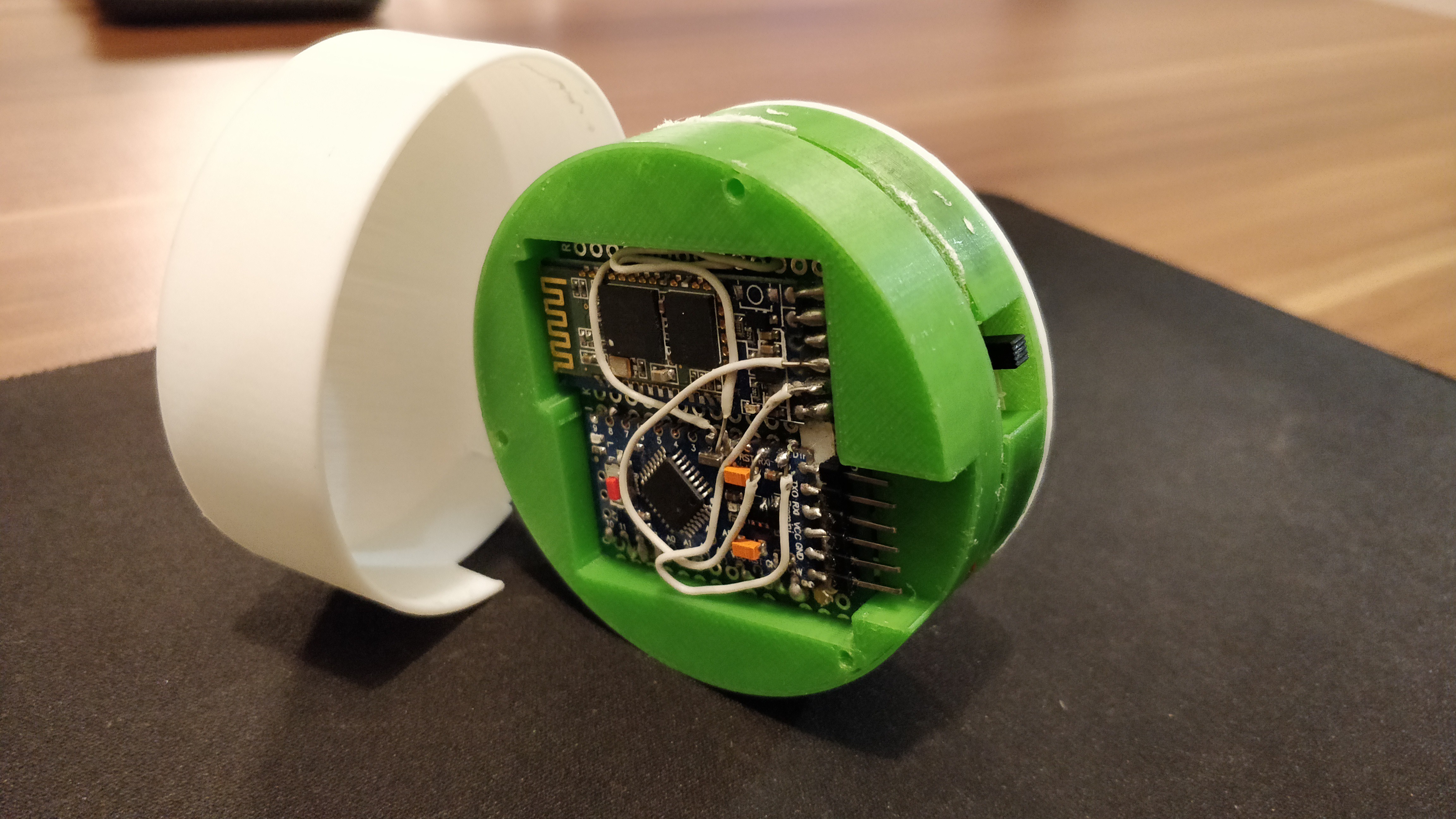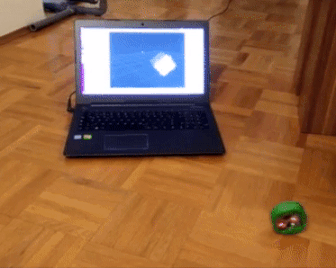-
PCBs BRING UP - IT IS ALIVE!
05/21/2018 at 20:51 • 0 commentsWill they blink?
The boards are with us! Time to solder the components and check if everything works.
![]()
To make SMD prototyping boards from through-hole ones you just need some sandpaper and patience, the results are incredibly good!
---------- more ----------![]()
The new boards are powered with LiPo Batteries, after checking there are no obvious short circuits on the board lets turn them on!
![]()
To program the sensor we use the RTIMULib-Arduino code from the repo and configured the HC-05 Bluetooth module with a baudrate of 115200 bauds.
On the PC side RTIMULib2 was used to verify the correct functionality of the board. With the GUI version running is easy to check if everything is working as expected.
The micro controller answers to our commands and there are no signs of smoke… the last test is to hook it up to the computer with the Bluetooth module.
![]()
It works!
Some friends
Now it is time to populate the other boards and have more than one sensor working. So… sandpaper, soldering iron and patience.
![]()
Done!
-
SCHEMATICS + LAYOUT
05/21/2018 at 20:45 • 0 commentsTime to Design!
The design of the boards is painfully simple. As all the components of our boards are small development boards with their own power regulators and level shifters, all we need to do is just connect the dots.
The design has some flaws we plan to correct in the following versions, but we didn’t want to miss the submit date for the HackaDay 2018 price and we order them without double checking a few things.
Working with Kicad was an experience itself, I personally expected it to be a little bit more user friendly, but once you get how to work with it is no so complex. Looking at the schematic and PCB layout you can see there is no need for any special feature. It is just really basic stuff.
---------- more ----------The PCBs are simple 2 layer boards without any special flavor.
Delivery
We were running out of time to have prototypes working by the end of the month, so… the boards were ordered with express shipping. It hurts deeply in the pocket when the priority shipping costs 10 times more than the boards.
-
FIRST PROOF OF CONCEPT
05/21/2018 at 20:39 • 0 commentsThe Firstborn
To test the viability of the idea a first prototype was developed and tested (with success!). The aesthetic was no priority and the soldering skills at the moment unavailable or nonexistent.
After some prototyping in the protoboard and making sure that the tool chains were correctly installed, devices reachable and git repositories clean and commited a more reliable development platform was needed, and so the hardware V0.1 was borned.
![]() ---------- more ----------
---------- more ----------With this device the integration with RTIMULib was tested and support for the MPU9250 device through SPI added.
We would like to specially thank mrbichel for doing the heavy lifting with his project RTIMULib, wich provides a great framework to interface with IMUs. It really help us a lot to just focus on the application and rely on his framework to send the data to the computer.
Side Note: At the very beginning, the development of the sensor started with the GY-85 IMU board but was quickly changed in favor of the MPU9250. In our forked version of the RTIMULib there is now support for the GY-85 too (even though it is not used anymore).
Going Wireless
The basic functionality of the device was already working and the computer was able to receive data, it was time to go wireless. The bluetooth module was configured and a LiPo Battery included.
The size of the PCB was reduced and a new 3D printed cased printed. Now the sensor fits easily in your hand and it is now ready for “real world” experiments.
![]()
ROS Integration
As our goal is to use the sensors in robotic applications, the integration with the ROS framework was always in the roadmap. A first small and basic ROS node reading the IMU packet was developed and tested.
![]()
Now that everything's kind of working we need more sensors! It is time to design our own PCB and make them smaller! (or at least thinners...)
IMcoders
IMU-based encoders. IMcoders provides odometry data to robots with a minimal integration effort, easing prototyping on almost any system.
 Pablo Leyva
Pablo Leyva